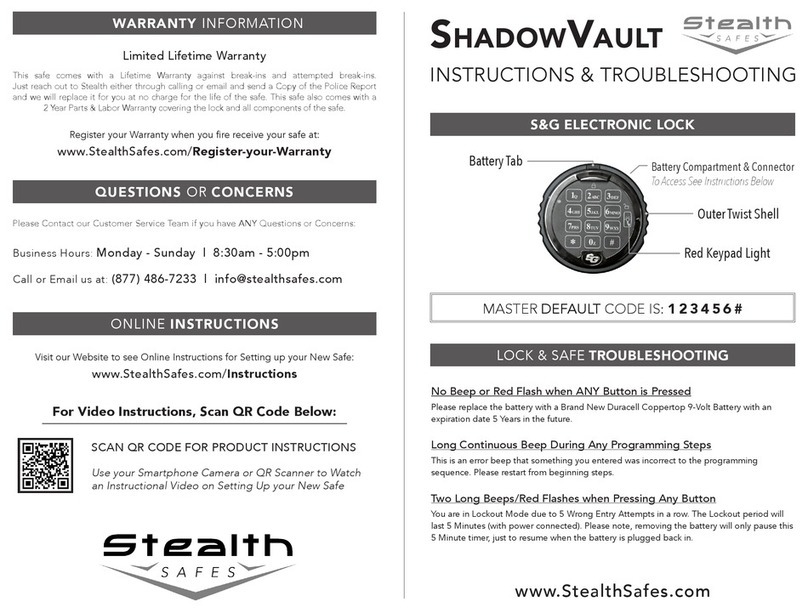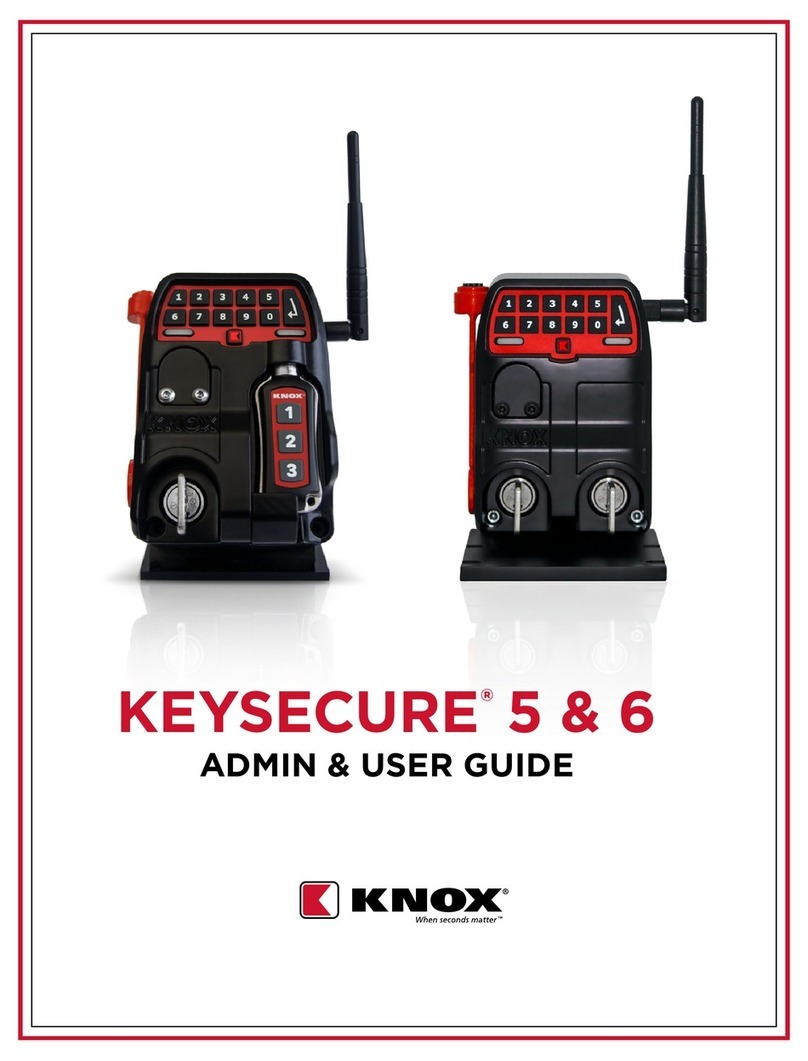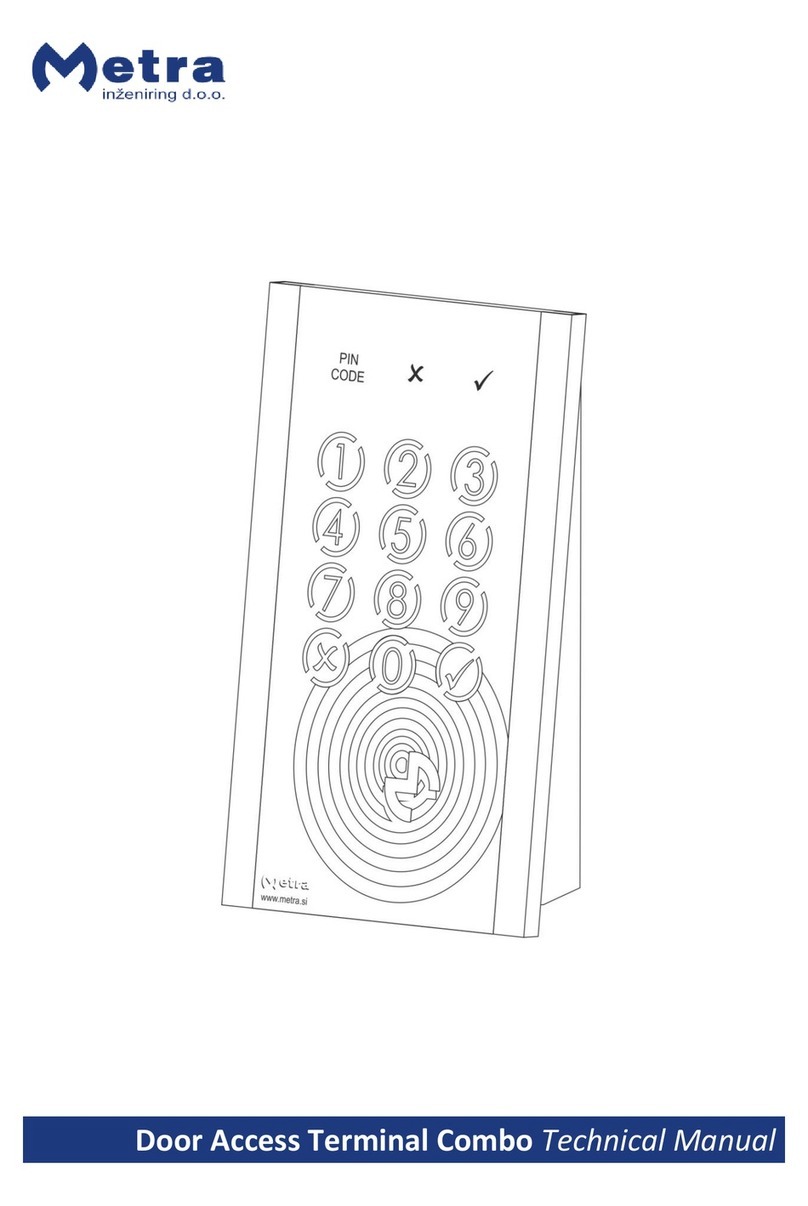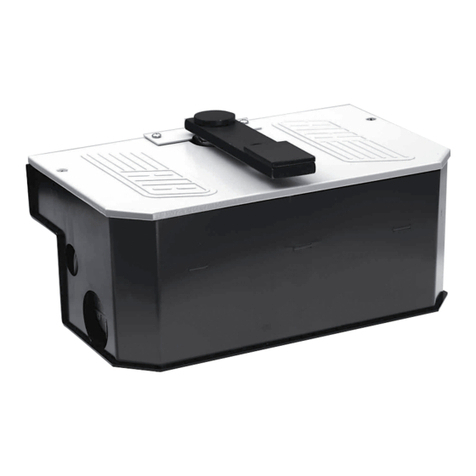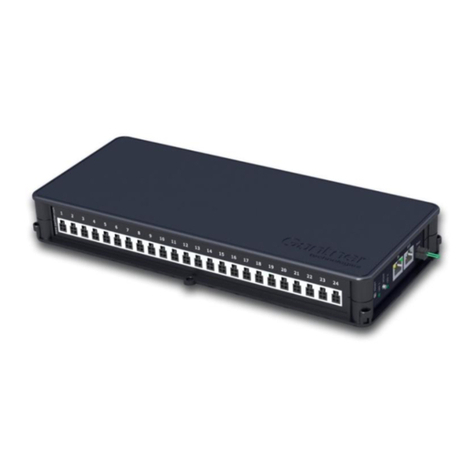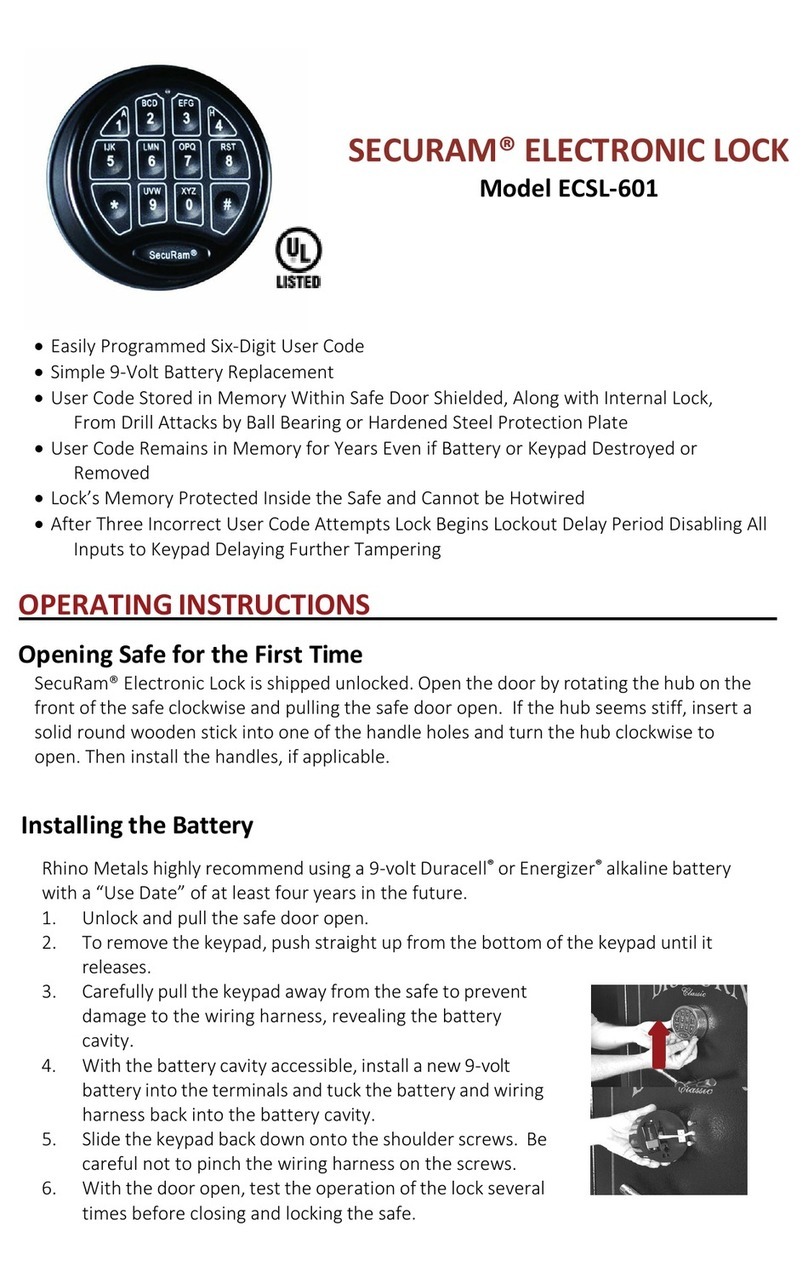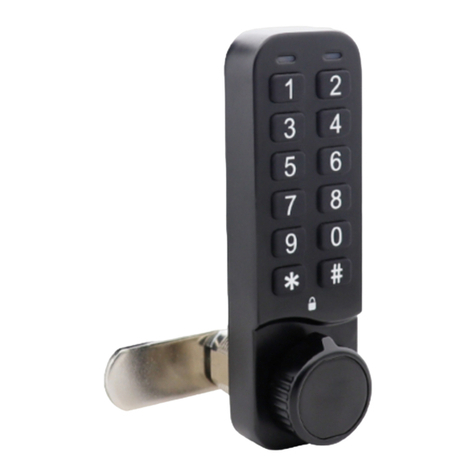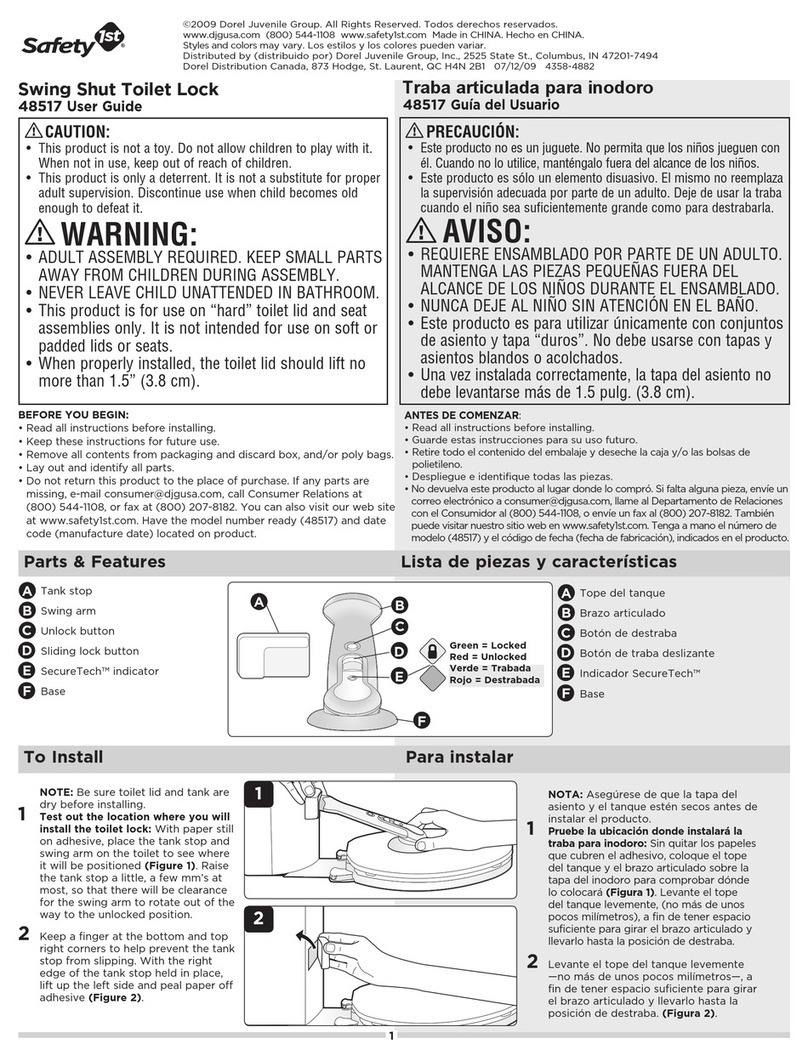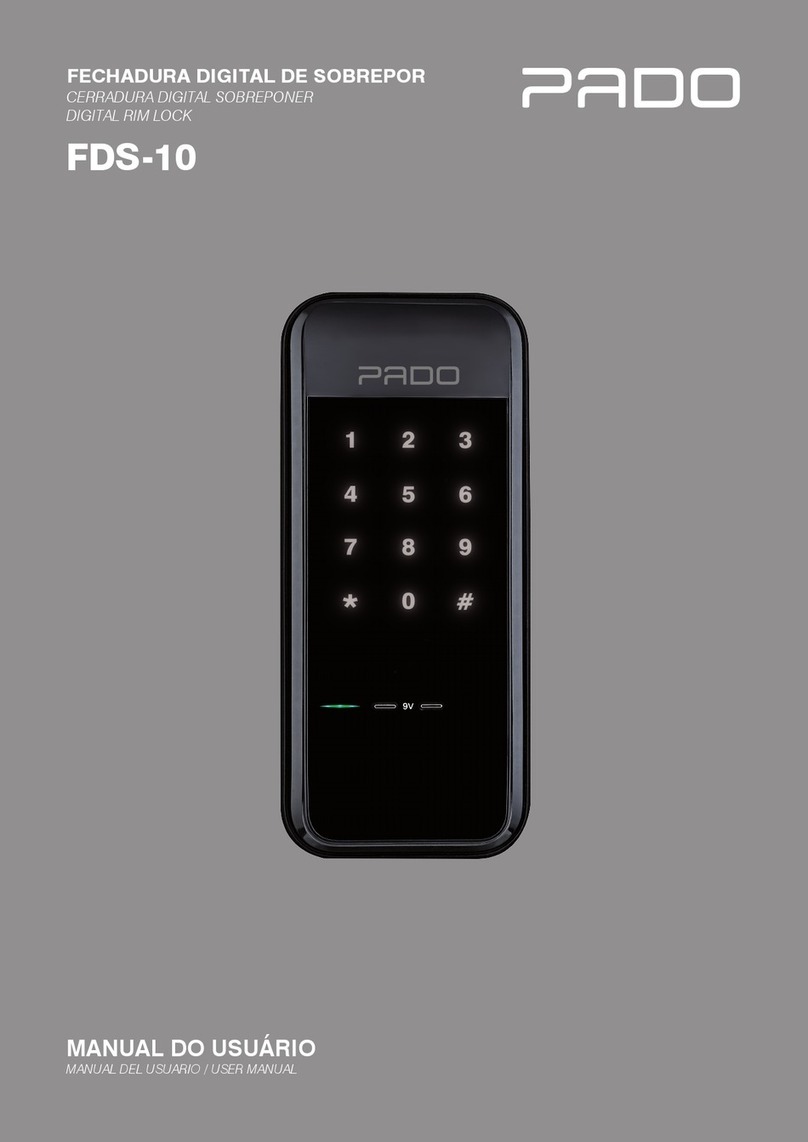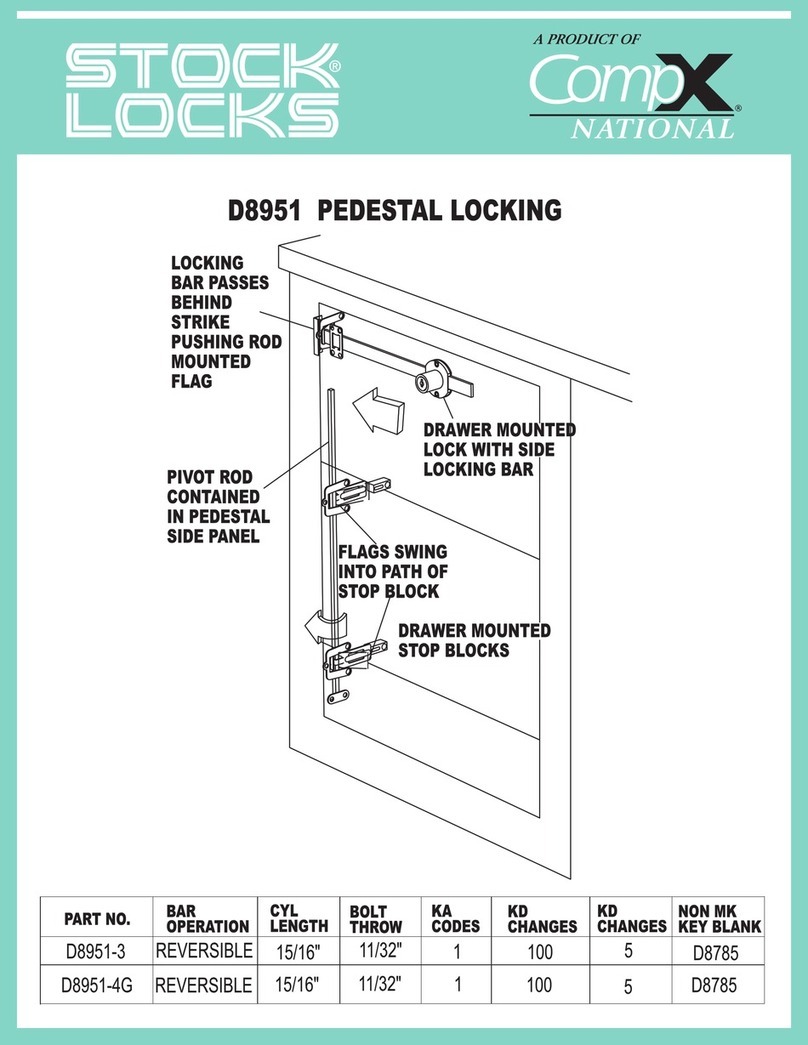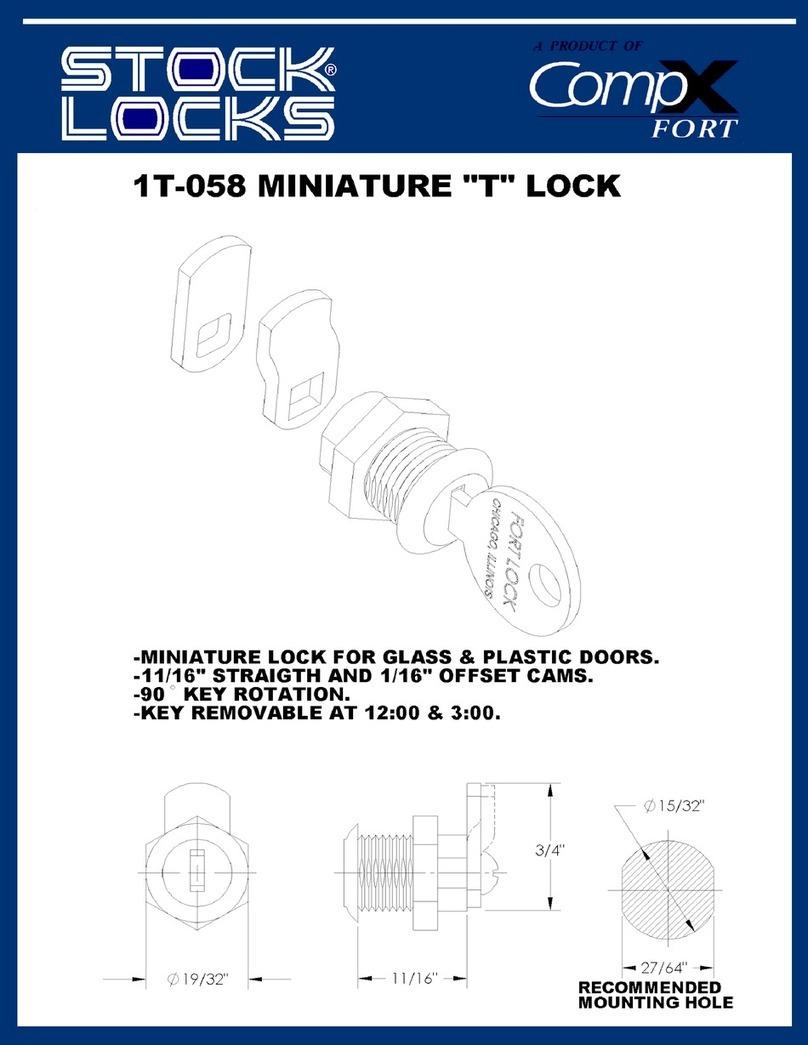Installation Instructions for CAVILOCK CL400 Magnetic
Privacy Handle
Before you Start:
1. This handle has been manufactured to specifications which cannot be altered by the installer.
These include:
a Handle type: the CL400 handle is available in Passage, Privacy, Key Locking and Bi-Parting versions.
You have purchased the Privacy version.
b Configuration: the Privacy handle configurations include; Snib/Snib, Snib one Side, Snib/Emergency and
Privacy with Indication.
c Handing.
d Door thickness range: the CL400 handle is available to fit four door thickness ranges. These are:
34-40mm, 40-46mm, 46-52mm and 52-58mm (1-3/8” to 1-9/16”, 1-5/8” to 1-3/4”, 1-13/16” to 2” and
CL400 Snib/Snib
Privacy Handle
CL400 Snib/Emergency
Privacy Handle
CL400 with Indicator
Privacy Handle
CL400 Snib one Side
Privacy Handle
3
Door face
1
Door cut out
template
1. Mark a line on the face of the door where
the centre of the handle is to be positioned.
Align the centre line on the door cut out
template with the centre line on the door.
Follow the instructions on the template.
Transfer
lines
across
front edge
of door
2. Mark two holes in the centre of the door
thickness in the positions shown. Using these
marks, drill two 2.5mm (3/32”) diameter holes
to a depth of 35mm (1-3/8”).
5. Fit the privacy side handle containing
the snib button to the chassis as follows (if
installing a snib/snib privacy handle install
ONE of the side handles only):
a. Align the recess in the back of the snib
button with the arm of the locking slider.
b. Slide the front flange of the handle under
the heads of the 3x side handle to chassis
screws. Tighten the screws.
Top edge
of side
handle
61.75mm
(2-7/16”)
6
Front
flange
5
a
a
b
b
6. Close the door and mark a horizontal
line on the closing jamb 61.75mm
(2-7/16”) down from the top edge of the
side handle.
Note: these instructions are
demonstrated on a recessed closing
jamb, however, the same method
applies to a flat closing jamb.
Locking
slider arm
Recess
Reversed View
3mm (1/8”)
gap under
head
Side
handle to
chassis
screws
4
4. Fit the 6x side handle to chassis screws.
Leave a 3mm gap (1/8”) between the underside
of the screw head and the chassis.
a
c
d
e
i(2)
j(6)
k(3)
Privacy Side Handle (Left)
a
b
Privacy Side Handle Box
Privacy Side Handle (Right)
h(2) g
f
o(4)
q(2)
p
m(2)
n
l
m
n
o
p
Striker Nuts (2)
Striker Box
Striker Body
Striker Mounting Wood Screws (4)
Privacy Striker Face Plate
Striker Face Plate Screws (2)
r(2)
s
q
s
rPlunger Adjustment Spanners (2)
Tools (contained in Privacy Chassis Box)
CL400 Allen Key (used for all machine screws)
Note: Components will vary between the
‘Snib/Emergency’, ‘Snib/Snib’ ,‘Snib One
Side’ and ‘Privacy with Indication’ versions.
c
d
e
f
g
h
i
j
Privacy Face Plate
Privacy Chassis Box
Privacy Chassis
Plunger
Shroud
Plunger Nut
Spring Reservoirs (2)
Chassis Mounting Screws (2)
Side Handle to Chassis Screws (6)
Handle Face Plate Screws (3)
k
Emergency Release Button
(Where Applicable)
l
b
Raised shroud:
offers a greater
level of security.
Flush shroud:
decreased
security.
2-1/16” to 2-1/4”).
e Security: the CL400 handle varies in security depending on the version
and configuration. Handles supplied with a raised shroud provide a
greater level of security than those with a flush shroud, however, it
is important to note that the CL400 handle should not be installed in
situations where a high level of security is required, e.g. external entry
points or high security internal doorways.
Refer to the information printed on the Side Handle and Chassis boxes to
ensure you have purchased a handle with the correct specifications for your situation.
If the specifications are incorrect you will need to exchange the handle.
2. Component drawings have been provided. Please familiarise yourself with the components and check
the package to ensure nothing is missing. Note: Components may vary slightly between configurations.
3. To ensure the handle latches accurately, it is essential that the door is adjusted for height and is
parallel with the closing jamb when closed before installing the handle and striker.
4. This is a metric handle. Accurate measurements are shown in millimetres. Conversions to inches
are approximate.
4
PAGE
3
PAGE
2
Component Drawings
1
PAGE
PAGE
Door Preparation Fitting the First Side HandleFitting the Chassis Fitting the Striker
3. Remove the face plate screw and face
plate from the chassis. Align the chassis
with the centre of the door thickness.
Screw the chassis to the door (using the
2x chassis mounting screws) through the
slotted holes at the top and bottom of the
chassis. DO NOT fully tighten the screws.
Realign the chassis with the centre of the
door thickness. When happy with the chassis
position, fully tighten the screws.
Go to page 5 (overleaf)
Correct alignment
✓
==
Slotted
hole
Centre of door
thickness
Chassis
mounting
screws
WARNING: THE STRIKER CONTAINS A STRONG MAGNET
IRON FILINGS - Magnets will attract shavings from iron or ferrous metals which may be hard to
remove. Keep the striker a safe distance away from these materials.
DANGER FOR CHILDREN - Magnets may cause serious injury if swallowed. Keep out of reach of children.
CRUSHING, BLISTERS AND CUTS - Fingers may become caught between magnets resulting in crushing,
blisters or cuts.
BREAKING OR CHIPPING - It is possible that magnets could chip or shatter on contact with other hard
materials, resulting in chips flying off at high speed into someone’s eye. Chips can also be very sharp -
treat them as you would broken glass.
MAGNETICALLY SENSITIVE ITEMS - Keep a safe distance between the magnet and all objects that can
be damaged by magnetism (e.g. mechanical watches, pacemakers, cell phones etc.).
DISPOSAL - Magnets should be disposed of carefully and in accordance with your local regulations.
5mm
(13/64”)
5mm
(13/64”)
Ø 2.5mm
(3/32”)
2
Door
thickness

